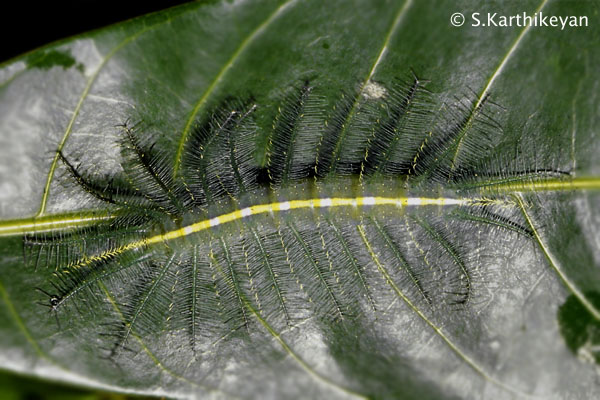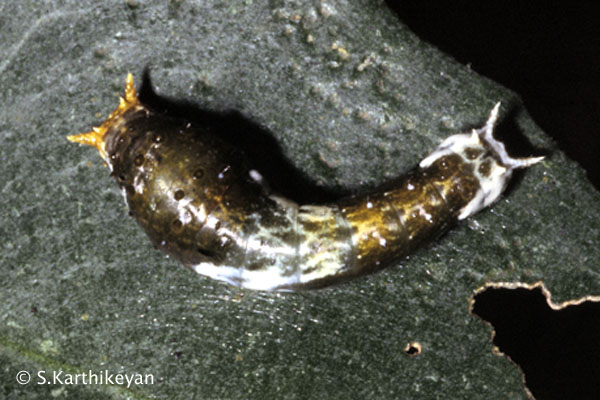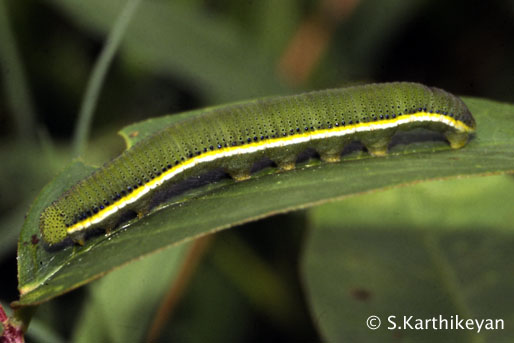All of us know that a butterfly has a four-stage life cycle. It starts with the female laying eggs on specific host plants (larval food plant). The larva (caterpillar) emerges from the egg, eats the food voraciously and after a few days it pupates. From the pupa emerges the butterfly.
During each of these stages, predators of all shapes and sizes threaten the butterfly’s survival. Perhaps, the larvae of butterflies are most vulnerable to attack by predators. They have, therefore, evolved some magnificent survival strategies.
The Common Baron butterfly uses mango leaves as the larval host plant. A search amid the mango leaves that are brought home on festive occasions may yield a larva of this butterfly. Without a careful search, this unusual larva may be overlooked. It is not brightly coloured, on the contrary, it is very well camouflaged.

The green colour apart, the feathery protrusions on the back of the larva and the pale yellow line running from head to tail adds to the perfect camouflage. While resting, the larva often aligns this yellow line with the midrib of the leaf enhancing this effect!
While the larvae of the Common Baron butterfly camouflage themselves on the mango leaf they feed on, the larvae of the Common Mormon and several other swallowtail butterflies, during the earlier days resemble a bird dropping! This makes them subjects of disinterest for their predators. As they grow and moult, they change their colour to some shade of green that blends in with the larval host plant. So, it may just pay off if you scanned the mango leaves brought in during the festive season for this larva. If you find one, you could either rear it to adulthood or ensure that you put it back on a mango tree.

Similarly, there are several larvae which seem to disappear amid the foliage of their respective larval host plant owing to their green colour.

The next time you find yourself surrounded by plants, be sure to search for the caterpillar which could be spying on you, well hidden in the foliage!